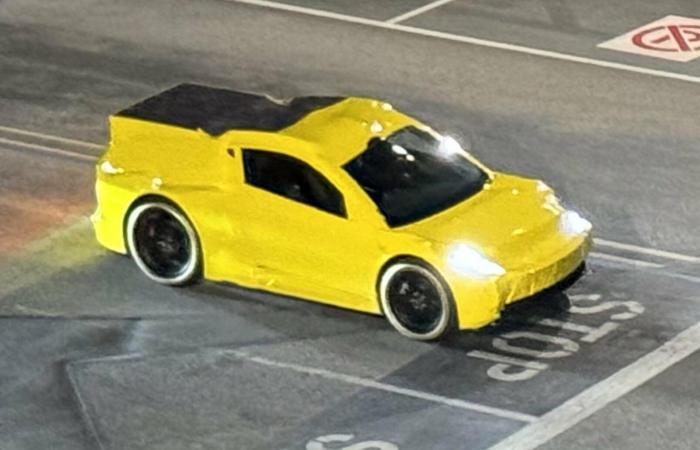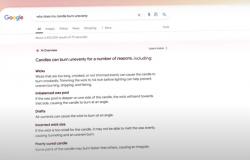On October 10, Tesla will lift the veil on one of the most ambitious projects in automobile history: the Robotaxi. This fully autonomous vehicle, without a driver, steering wheel or pedals, embodies Elon Musk’s futuristic vision for electric mobility. But behind this spectacular presentation hides a long series of sometimes risky decisions, as revealed in the biography “Elon Musk” by Walter Isaacson published in September 2023. Through a chapter dedicated to Robotaxi, this book reveals behind the scenes of this bet crazy, where Musk often had to cut to the chase to stay true to his radical vision of the future.
In the head of Elon Musk: a crazy, but visionary project
The idea for the Robotaxi took shape during intense discussions between Elon Musk and his closest collaborators, a small circle of trust described in detail in Isaacson’s biography. In November 2022, Musk gathers his five lieutenants in Austin for an informal dinner. Around the table, Franz von Holzhausen, Drew Baglino, Lars Moravy and Zach Kirkhorn reflect with Musk on what the future of autonomous transportation could be. During this meeting, Musk is adamant that the Robotaxi must be smaller, cheaper and slower than the Model 3.
But the question of integrating the steering wheel and pedals arises. Most engineers recommend caution: integrating removable controls while waiting for technology and regulations to follow. But Musk categorically refuses. He decides: “No steering wheel, no pedals, no mirrors. We are betting everything on autonomy.” relates Isaacson. This anecdote illustrates Musk’s uncompromising vision. He takes responsibility for this radical decision, even if it complicates the path to regulatory validation. “If it fails, it will be my fault,” he says.
The engineering of the Robotaxi also posed complex, often unexpected, technical challenges. Walter Isaacson recounts how, week after week, Musk intervened in every detail of the design, asking questions that revealed the complexity of the project. For example, he asked what would happen if a passenger forgot to close the door when leaving the vehicle: “The Robotaxi needs to be able to close its own doors,” he insisted. Lively discussions also took place around access to car parks and closed places with access control. We learn in the book that Elon Musk considered equipping the Robotaxi with an arm to press buttons or take a ticket, before concluding that this would be too complicated, simply preferring to exclude these difficult-to-access areas.
There are countless problems inherent to a shared vehicle. According to patents recently filed by Tesla, the interior of the Robotaxi could be equipped with an automatic disinfection system. In a post-pandemic context where hygiene has become a priority, Tesla plans to integrate ventilation nozzles and UV rays to disinfect the cabin between each passenger.
A risky industrial and technological bet
The Robotaxi is not only a technological challenge, it is also a gigantic industrial bet, as Walter Isaacson points out. Tesla is not looking to produce a few thousand vehicles, but millions each year. This mass production is crucial to making the Robotaxi economically viable and accessible to a wide audience. Elon Musk plans to build ultra-automated factories, where every millisecond of the manufacturing process will be optimized to achieve unprecedented efficiency.
The experience of “production hell” between 2017 and 2018, during the ramp-up in production of the Model 3, had a profound impact on Musk. Since then, the optimization of manufacturing processes has become a central priority in its management. Its incessant quest for efficiency results in regular exchanges with its engineers to refine each stage of production. Musk spends hours personally overseeing every position in the line, constantly seeking to reduce costs and speed up throughput, as Isaacson reports. This obsession with efficiency is now at the heart of Tesla’s strategy and will play a key role in the production of the Robotaxi.
“Our priority must be volume,” insists Elon Musk. Its goal: to one day achieve the production of 20 million Robotaxis per year. As Isaacson explains, this ambition reflects Musk’s determination to produce on a massive scale to make Robotaxi a transportation solution accessible to all. He even envisions the majority of these vehicles being owned by Tesla or corporate fleets, calling individual car ownership into question.
Although Tesla is an undisputed leader in the electric car space, competition in the shared and autonomous vehicle sector is very real. Among the most serious competitors, Waymo, a subsidiary of Google, has already deployed a fleet of 600 autonomous vehicles in cities such as San Francisco and Los Angeles. These vehicles, already fully operational, transport passengers without a driver, a definite advantage over Tesla.
However, in recent months Tesla has made notable progress on FSD (Full Self-Driving), its own autonomous driving system, based on a very different technological approach. Elon Musk recently said on This progress shows the continued optimization of the system and Tesla’s confidence in its ability to offer ever more autonomous and reliable driving. Unlike Waymo, which primarily uses LIDAR to map the environment, Tesla relies on analyzing real-time video feeds via artificial intelligence, allowing the vehicle to “see” and respond more naturally, although this is a major technological challenge. Elon Musk took this risky bet by abandoning LIDAR years ago, against the advice of his own engineers.
As Walter Isaacson reports, during discussions about abandoning the radar, Jerome Guillen, then president of the automotive division, strongly opposed it, arguing that its removal would be dangerous. Radar could detect objects that were difficult for a camera or the human eye to perceive. An internal debate was organized to make a final decision. After listening to all the arguments, Musk said “I’m unplugging the radar. Delete it.” Despite Guillen’s insistence, Musk remained steadfast, going so far as to say, “If you don’t take it down, I’ll find someone else who will.” In January 2021, he sent an email to the entire team: “From now on, turn off the radar. I’m not kidding.” Shortly after, Guillen left Tesla.
A decisive moment
These elements recounted in Musk’s biography show how radical Tesla’s approach is and how big the company is playing. In his book, Isaacson relates how Musk sees the Robotaxi as a product capable of making Tesla the most valuable company in the world: “It will be a historically mega-revolutionary product. He will transform everything. This is the product that will make Tesla a ten trillion dollar company. We will talk about this moment in a hundred years.”
Next week, Tesla will demonstrate the Robotaxi at an event at Warner Bros Studios near Hollywood. This event, called “We, Robot”, will highlight the capabilities of autonomous vehicles. A reconstructed city will serve as a setting to simulate an urban environment where the Robotaxi will circulate without a driver, thus illustrating Tesla’s vision. According to Walter Isaacson, the design of the Robotaxi could be inspired by the Cybertruck, but in a smaller version. A prototype has already been seen near the studios, hidden under a yellow bodywork.
On October 10, Tesla will unveil not just a new vehicle, but an ambitious vision that could redefine mobility. As Walter Isaacson explains, the Robotaxi project is the result of long years of work, risky choices and intense debates. However, several questions remain open.
Has Elon Musk changed his positions since the discussions recounted by Isaacson, in particular on the absence of a steering wheel and pedals, or his refusal to compromise technologically? Will production start quickly or will we have to wait years before seeing these vehicles on the streets (the famous “Elon Time”)?
Will the Robotaxi be accessible to the general public, with pre-reservations open during the presentation, or will Tesla start by managing these fleets internally, like Waymo? Finally, how will investors react to this risky, but potentially very lucrative bet for Tesla?
Visit Automobile Propre after the presentation on October 10 for the first answers.
The rest of your content after this announcement
The rest of your content after this announcement







